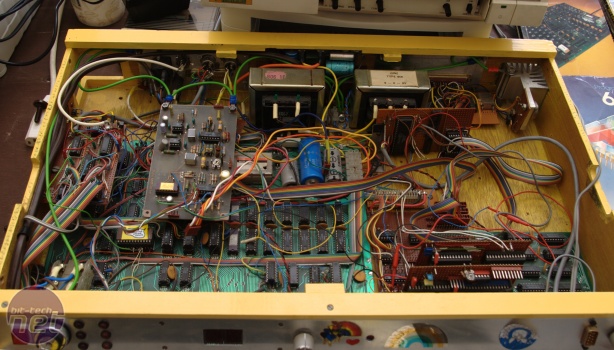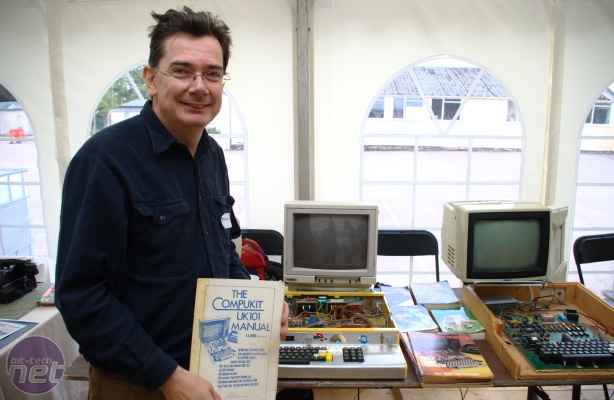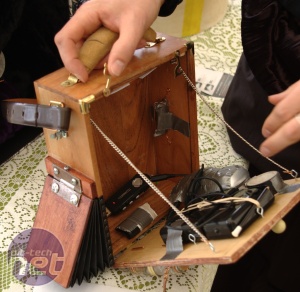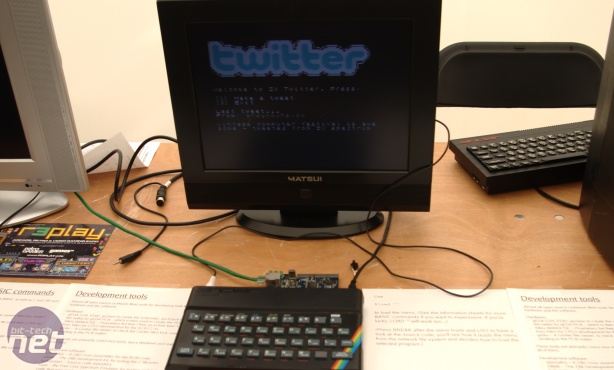The Vintage Computing Festival 2010
June 26, 2010 | 10:42
Companies: #a-eon #bletchley-park #national-museum-of-computing #the-national-museum-of-computing

The Vintage Computing Festival 2010- Hacking and Modding
The penultimate weekend in June saw a horde of techies, geeks, and digital enthusiasts descend on the birthplace of British computing, Bletchley Park, for the UK's first Vintage Computing Festival - and bit-tech was there to bring you the latest news from the world of the old.As well as crowds of guests eager to see a huge range of retro kit, the Festival drew demonstrators from a range of disciplines - from hardcore hardware hackers to steampunk fans, if it involves vintage technology, you'd be likely to find it somewhere at the event.
For modern enthusiasts, who are often pleased when an overclock increases the clockspeed of a system by ten or twenty percent, the concept of a doubling of clockspeed seems ludicrous - but that's exactly what hacker John Honniball was demonstrating on his stand. Honniball's Compukit UK101 systems are based around kit-form hardware from the early days of home computing in the late seventies and early eighties - but, like any true hacker, he's made a few modifications.
By adding a custom PSU, Honniball has been able to increase the speed of the 6502 processor by 100 percent - admittedly to a, by modern standards, somewhat paltry 2MHz - while double-stacked RAM chips offer 8K of memory and a similar hack to the video RAM offers colour graphics - unheard of at the time. Add in a hand-built modem board, a phoneme chip for speech synthesis, and custom keys on the keyboard - which Honniball explains had to be mounted in holes drilled directly into the PCB and soldered in to new traces added by hand - and you've got a tricked-out system than any modder would be proud of, all housed in a custom case featuring an acrylic lid to keep curious fingers away from the somewhat dangerous exposed power supply.
The steampunk stand - hosted by Big Dog Interactive's director Dr. Simon Lock in full Victorian garb - drew some pretty confused crowds with its esoteric marriage of modern hardware with Victorian-era design. The hand-cranked MP3 player - christened by Dr. Lock as the "iPhonograph" - certainly drew stares, although perhaps not as much as the top hat which chimes the hour and tick the minute when the user calls "sir, the time please" into the attached velvet speaking tube.
Another interesting hardware hack on display was the Spectranet interface by Dylan Smith - an add-in board designed to offer Sinclair ZX Spectrum 8-bit machines a chunk of additional RAM and an Ethernet port to get them online. Smith demonstrated a working Twitter client running on a Spectrum 48K, which accepted usernames and passwords and allowed messages to be posted to the popular microblogging service - a fun curiosity, if nothing else.

MSI MPG Velox 100R Chassis Review
October 14 2021 | 15:04













Want to comment? Please log in.